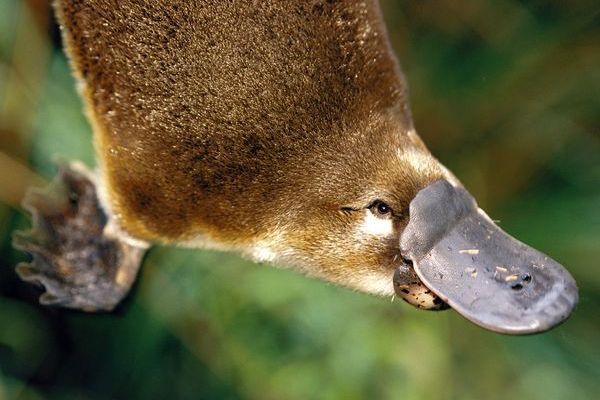|
By Alexandra DeCandia
The platypus (Ornithorhynchus anatinus) is a zoological enigma. One of three extant species in the basal order Monotremata, it exists as an amalgamation of interclass characteristics that engender “Frankenstein’s monster” in taxonomic classification. Particularly in reproductive biology, platypodes blend the structures of mammals, reptiles, and birds to make for some of the strangest sex and reproduction in the animal kingdom. Unlike most other mammals, platypodes house their reproductive organs within a true cloaca. Retained from reptilian ancestors, this single aperture serves as both the exit point for excretory material and the exchange point for gametes. In females, the cloaca opens into a urogenital sinus that bifurcates into two reproductive tracts. On the left is a functioning ovary; on the right lies a small embryonic sac of primordial follicles. Such asymmetry, while common in many avian and some reptilian species, is rarely exhibited in mammals. It is matched only by the bifid penis of the male, which possesses asymmetrical glands that fit within the female’s uteri in a perfect “lock and key.” To aid fertilization, the upper third of each bifid is covered in keratinized spines that induce ovulation as well as flowery papillae that bring sperm closer to the follicles. While the bifid, spiny penis is the sexiest of platypus reproductive structures, it is not the only morphology that is a little different in monotreme males. They also possess ascrotal testes that reside within the abdomen. Termed “the testicondid condition,” platypodes are among birds, reptiles, and only a few other mammals that possess this primitive trait. Female platypodes be warned: despite their condition, male monotremes possess some of the largest testes in the world relative to their size. It is thought that sperm competition is likely the culprit. He whose testes are largest, produces the fastest sperm; he whose sperm swims fastest, fertilizes. Male platypodes do not rely solely on these massive testes to optimize their fitness, though. During breeding season, elevated testosterone levels induce more frequent male-male conflict as breeding partners are sought. Younger, more naïve males choose to adopt stealth as their strategy by exploiting temporal shifts in mate-seeking. Larger, more experienced males utilize battle as means of mate-acquisition. Ornithorhynchus may not appear a fierce warrior with his edentate bill and webbed feet, but with one swift jab of his hind leg, he can incapacitate any enemy long enough for mating to occur. Platypodes possess a venomous spur on the inside of each hind limb. One of the few extant venomous mammals, platypodes can use this nonlethal sting to establish a hierarchy between males and allows only the heartiest competitor to mate. Courtship in platypodes is brief and pointed. Males, having won the right to approach females unchallenged by subordinates, quickly mate and subsequently leave the inseminated female in search of others. The female, no longer interested in male attention, embarks on her nesting period. In yet another deviation from their mammalian counterparts, platypodes are oviparous. Once eggs reach roughly seventeen millimeters in utero, they exit the female’s cloaca and finish developing on the wet vegetation she deposited in her excavated incubation chamber. Ten days later, the incredibly altricial young use their egg-teeth to liberate themselves from their parchment-shells in order to trade yolk-sacs for milk. Unlike all other mammals, monotremes lack nipples. Therefore, in a touching display of maternal devotion, the female sweats milk from her abdomen so her offspring may suckle and grow. Lactation lasts for roughly four months. In that time, young platypodes begin to resemble adults and reach a level of self-sufficient maturity befitting adolescents ready to take on the world. Once weaning has occurred with little ado, mother and young depart from the burrow. The males prepare to battle for dominance and inseminate as many females as possible with their keratinized, bifid glans. The females prepare to excavate riverbank burrows, lay eggs from their left uteri, and secrete milk for their young. It’s a unique, ancient strategy of reproduction that has stood the test of time among eutherian mammals alike, despite its strange and haphazard nature. It is successful, it is bizarre, and it is distinctly platypus.
0 Comments
Leave a Reply. |
Categories
All
Archives
April 2024
|

